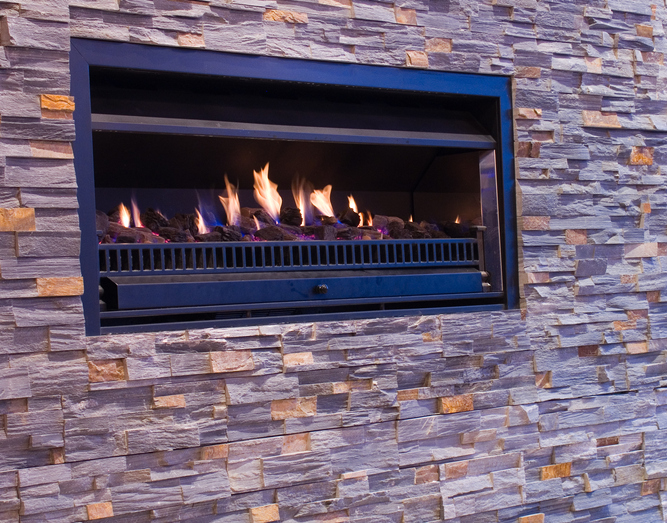
The warmth of your fireplace creates an inviting atmosphere. To keep the hearth alive, you will want to make sure you are maintaining your fireplace correctly.
Most gas fireplaces come with a standing pilot light. You may wonder what a pilot light does if you should turn it off during warmer months and more. Knowing about your fireplace’s pilot light is one part of your fireplace maintenance.
Gas-operated fireplaces have either a ceramic or tube-style burner. These burners include gas valves, control modules, and other fittings. After pressing the remote controller, the thermostat calls for heat, opening the gas valve allowing for gas to flow through the burner.
Right before the burner is the pilot light. Pilot lights can be “steady-on,” “intermittent,” or an electrical ignition system. The latter is on only when the valve is opened, and the fireplace is on.
Millivolt valves use a pilot light that is always on, so leaving it on through the year will confine to your millivolt ignition system. The intermittent ignition can set the pilot to run continuously but operates in auto shut-off mode.
Before turning off your pilot light, make sure you know where your pilot light is located, so you can double-check if the flame has been turned off.
Usually, the flame is in the back or behind some of your logs. If you cannot find the flame, chances are the flame is out.
Once you have found the flame, you can switch the knob from the “pilot” position to the “off” position. Depending on your fireplace model, you may push off a small lever before you turn the dial, or you may have to push your valve in before turning it to the “off” position. Double-check your owner’s manual to be sure.
After turning your dial off, see if the flame is out. If it is still on, you may have a faulty valve to get repaired or replaced.
Most pilot lights use about 600 BTUs of gas every hour. If you leave it on for a whole day, it will use about 14,4000 BTUs every day.
There are some advantages and disadvantages to leaving your pilot light on during the year. One advantage is that if you are not using your fireplace for the summer months, you can save up to $30. Another advantage is that the heat from your pilot can help keep your firebox dry which is helpful if you live in a humid climate. Pilot lights also stay small and silky spider webs from blocking your pipes.
If you opt to shut off your pilot light, it will have to be re-lit in the fall. The procedure to turn on your light is in the owner’s manual, and if you are uncomfortable turning it on yourself, you can call a professional from Ed’s Woodshed to do it for you.
For more tips and tricks about fireplace maintenance, contact Ed’s Woodshed in Bridgeville to receive full-service assistance on your fireplace needs. Ed’s Woodshed has been serving the Pittsburgh area its high-quality fireplaces for over 35 years. Call Ed’s Woodshed at 412-257-0492 for your fireplace insert needs!